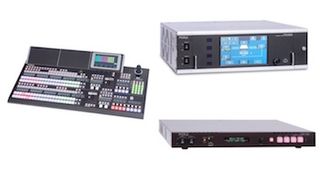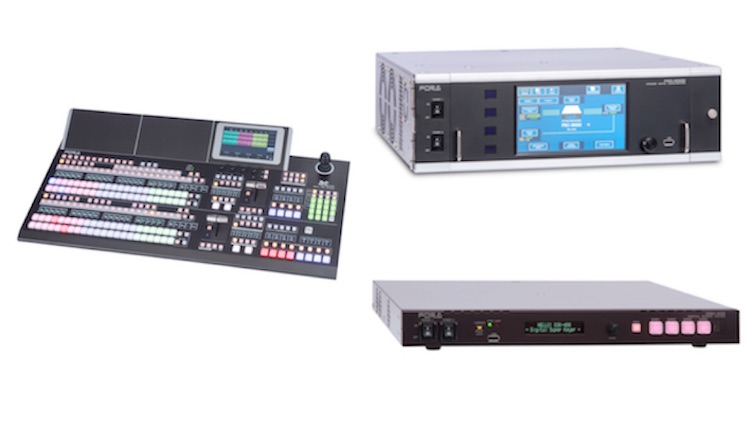
From left, clockwise: HVS-490 Production Switcher, FRC-9000 Frame Rate Converter, and DSK-400 4K/HD Keyer Several of FOR-A’s 4K-supported solutions are being used for production of the 2018 Olympic Winter Games, including video and routing switcher, multiviewer, and video conversion technologies. Broadcasters in a number of countries, including the United States, Japan, and Korea are using FOR-A solutions for coverage.
“FOR-A is proud to say that its products have been relied on for production of every Winter and Summer Games since the 1998 Nagano Winter Games,” said Hiroaki Tanoue, senior general manager of FOR-A Planning/Marketing Division. “We pride ourselves on providing efficient, innovative technology that our customers can rely on, and we’re confident that our products will help broadcasters execute seamless operations in their coverage of this month’s Winter Games.”
FOR-A’s frame rate convert technologies have been used in all recent Games, and one solution that is being used in PyeongChang is the FRC-9000 unit. The FRC-9000 frame rate converter features 4K/3G/HD/SD multi-format support and conversion with motion-compensation processing, and offers the option to upgrade to dual channel conversion in 3G/HD-SDI and store up to two Dolby E encoder/decoder optional modules.
FOR-A products being used in 4K production systems include both the HVS-490 and HVS-2000 video switchers. Offering an extensive feature set that allows for creativity in video switching, the HVS-490 production switcher enables more affordable 4K production. Thanks to its compact size, the HVS-490 is suitable for mobile production and live event venues where space is limited but production quality is critical, such as for broadcasters at the PyeongChang Games. The HVS-2000 switcher offers capabilities including MELite, which allows a traditional AUX bus to transform into a functional M/E with cut, mix, wipe, and key control; FLEXaKEY, which enables operators to tailor their production needs by adding and moving key and DVE layers to traditional M/E resources or to MELite resources; and its panel memory system, P-MEM, which includes simple panel snapshot recall for events, sequence, and macro memory recalls.










